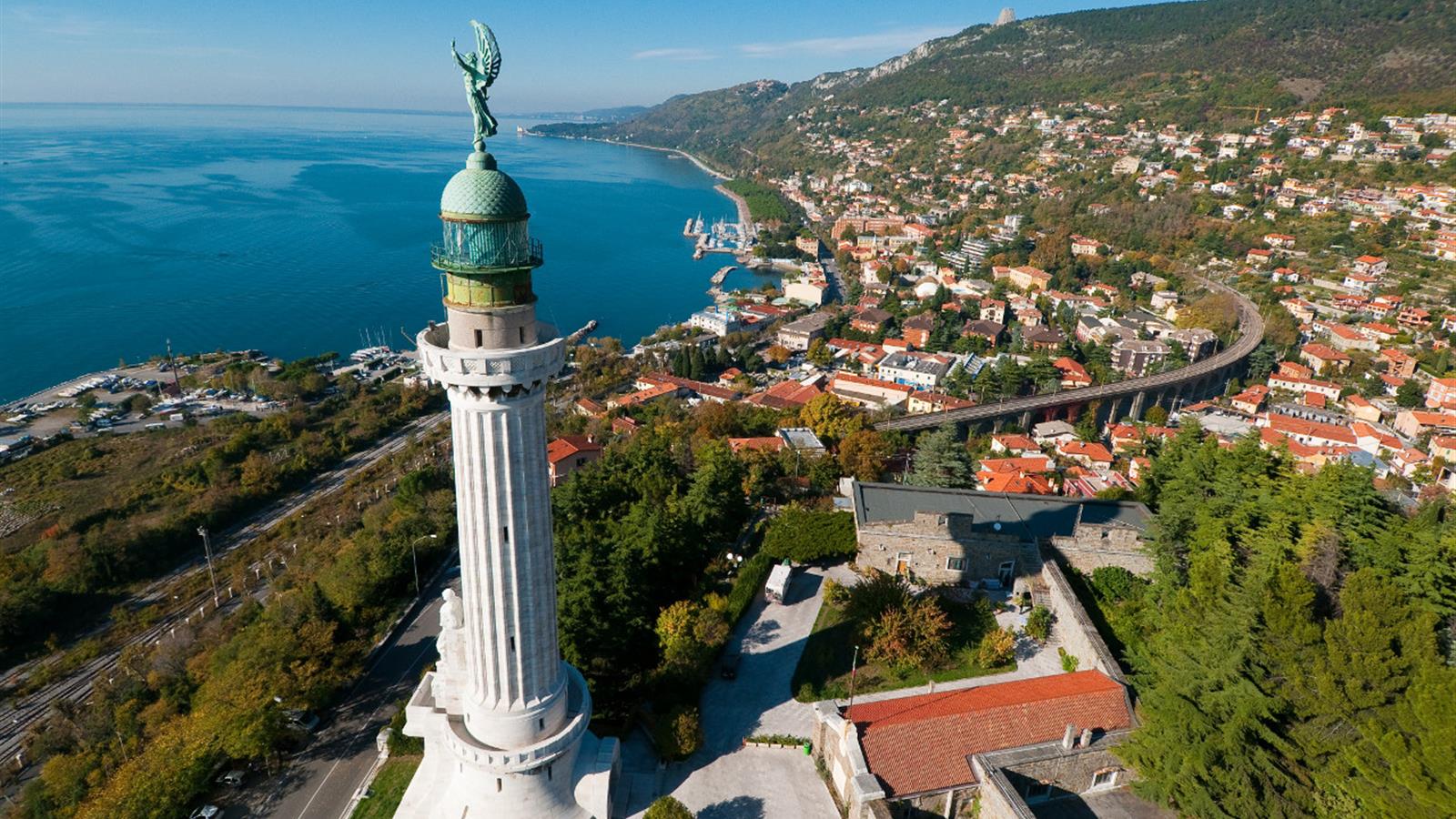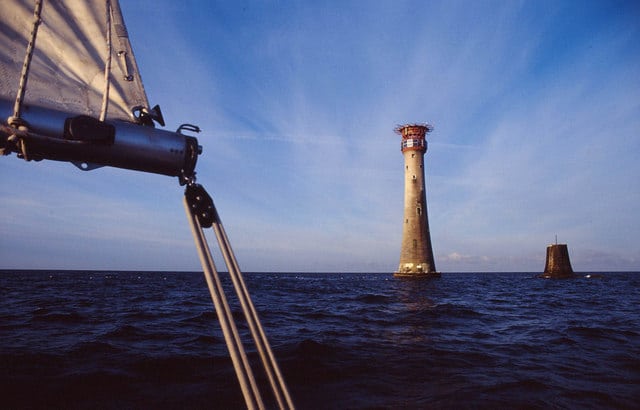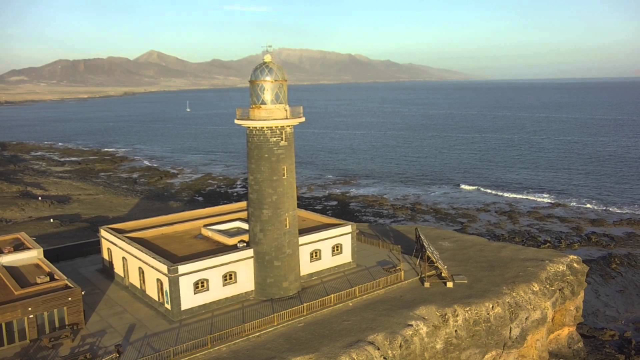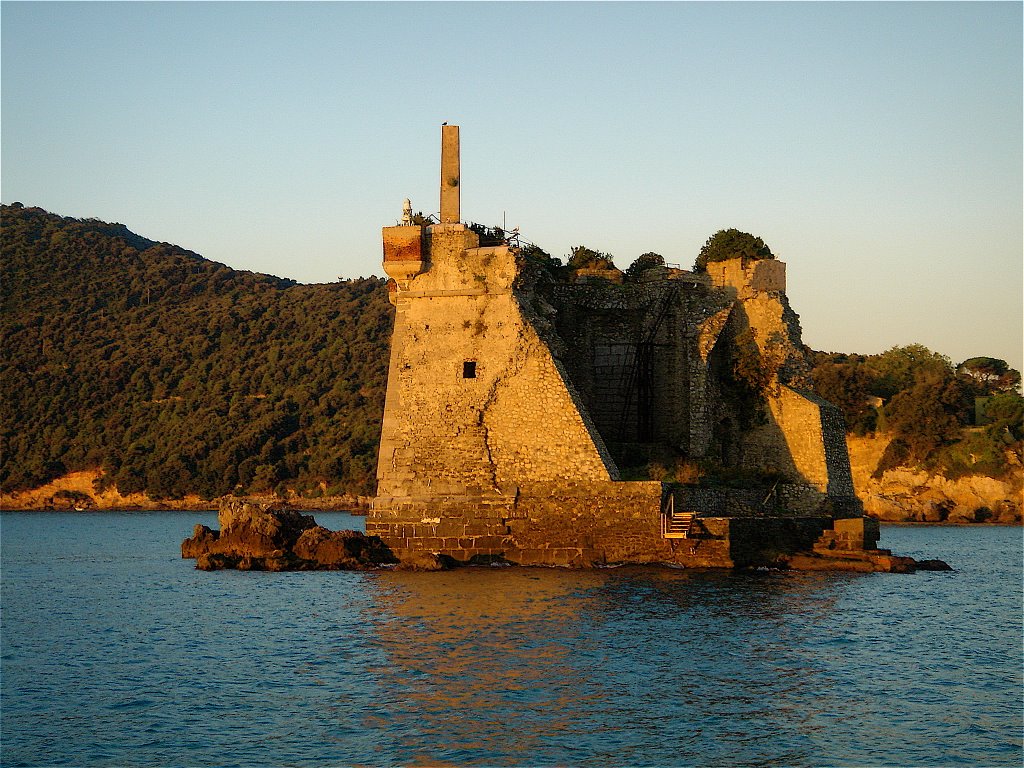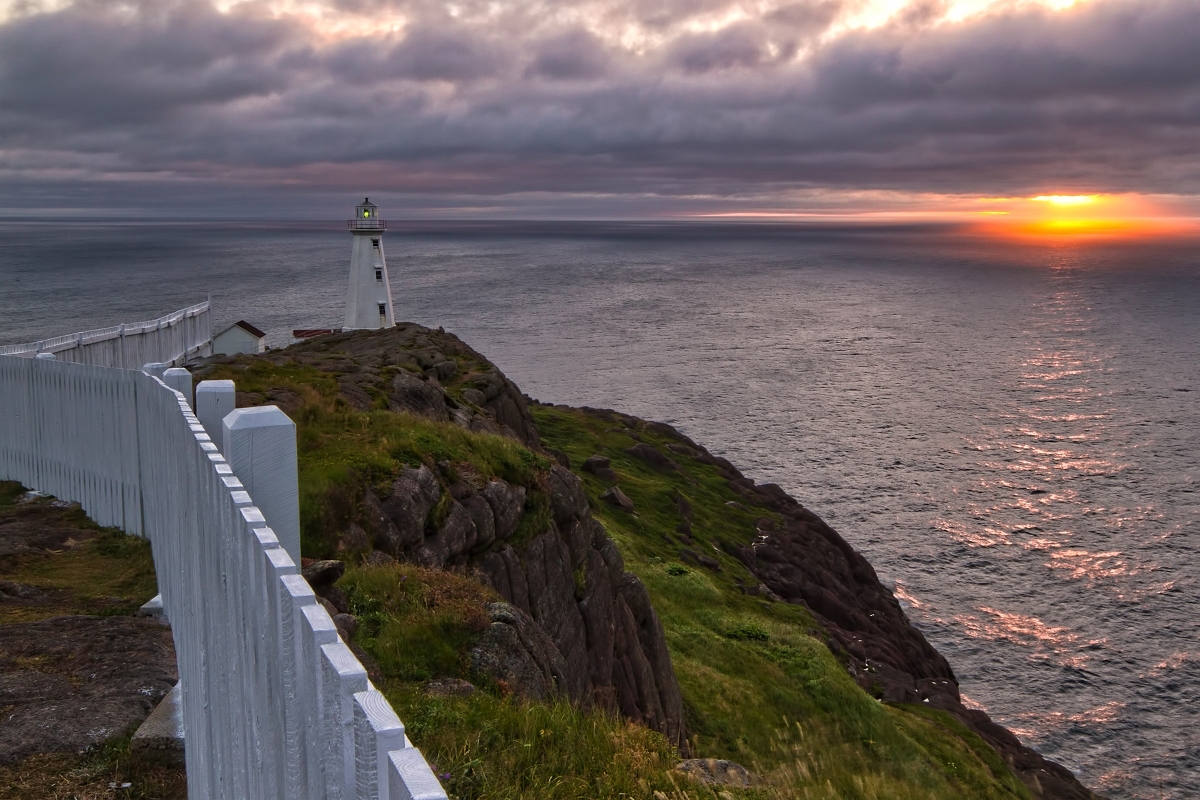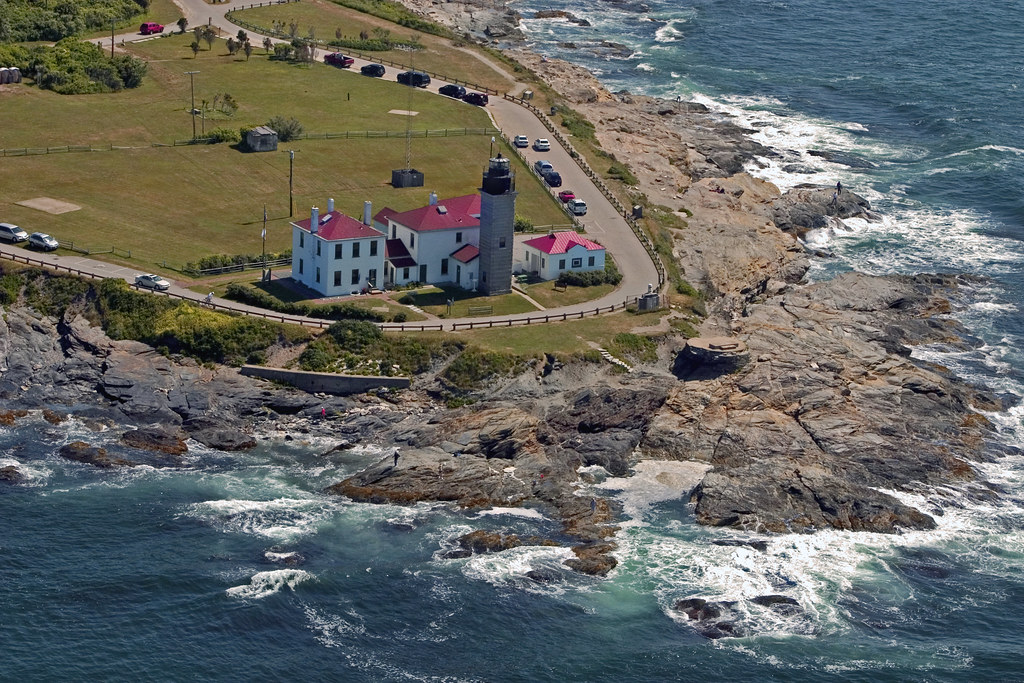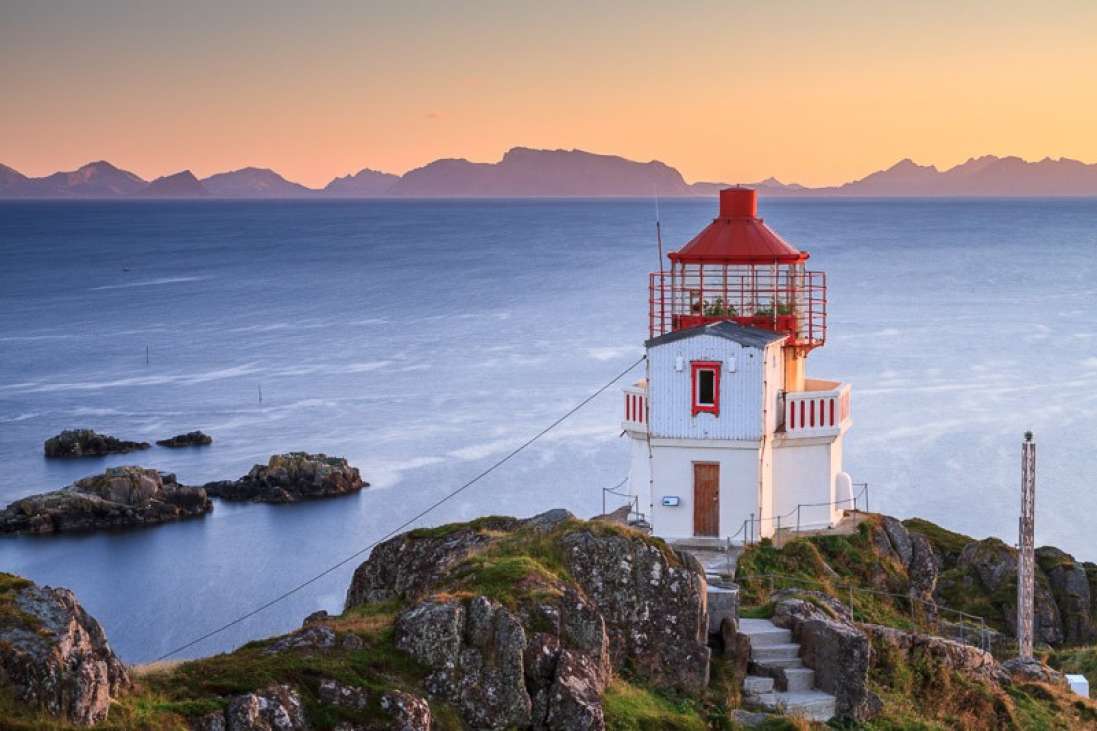The Victory Lighthouse is located in Trieste and was built between 15 January 1923 and 24 May 1927 by the Italian architect Arduino Berlam. In addition to its function as a lighthouse for navigation, illuminating the Gulf of Trieste, it also serves as a memorial to those who fell at sea during World War I, as evidenced by the inscription at its base: "Shine and Remember the Fallen at Sea".
The monument was built on the Poggio di Gretta, 60 meters above sea level, on the ancient structures of the Austrian fort Kressich of 1854. The original project of Berlam was modified, after a heated debate, by the architect Guido Cirilli, who directed the works. The base of the structure is made of stones coming from Istria and Karst, respectively Orsera stone and Gabrie stone. The base is made of stone from Istria and Karst, respectively Orsera stone and Gabrie stone, and a column stands tall and majestic, with a bronze and crystal cage at the top that holds the lantern-lighthouse. The final shape is deliberately that of an upside-down lyttorian beam.
The sculptor Giovanni Mayer (Trieste, 1863-1943) created the bronze statue of Winged Victory that crowns the top of the lamp, and the statue of the sailor that adorns the front of the lighthouse. The two statues are 7.2 and 8.6 metres high respectively.
At the base of the building there is an anchor that is popularly believed to be that of the torpedo boat Audace, which was the first ship of the Royal Italian Navy to enter the port of Trieste in 1918, while in reality it is the anchor of the R.N. Berenice.
At the entrance of the lighthouse there are two shells from the Austrian battleship Viribus Unitis.
